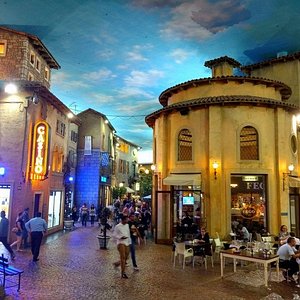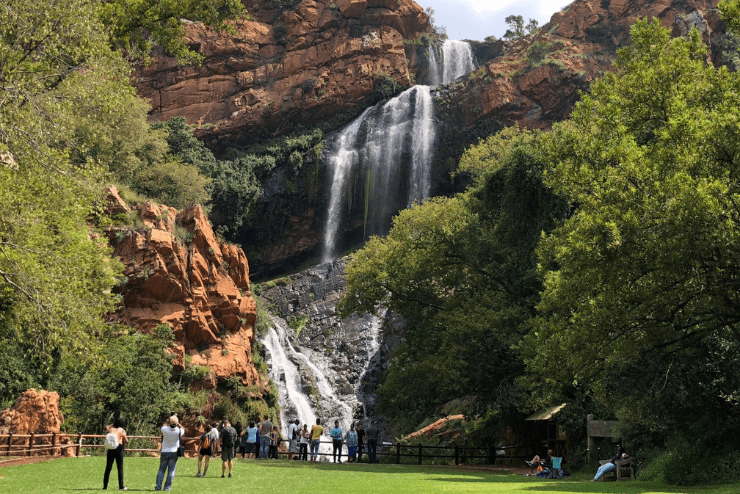An Unbiased View of Johannesburg North Attractions
An Unbiased View of Johannesburg North Attractions
Blog Article
The Definitive Guide to Johannesburg North Attractions
Table of ContentsThe 45-Second Trick For Johannesburg North AttractionsAn Unbiased View of Johannesburg North AttractionsThe 8-Second Trick For Johannesburg North Attractions8 Easy Facts About Johannesburg North Attractions Described5 Simple Techniques For Johannesburg North AttractionsEverything about Johannesburg North Attractions
The city expanded on the edge of the Witwatersrand Key Reef, a subterranean stratum of gold-bearing quartz-silica conglomerate that arcs for hundreds of miles beneath the Highveld - Johannesburg North attractions. Most of the gold mines in the city discontinued operation in the 1970s, yet in its day the Witwatersrand gold industry accounted for more than 40 percent of the globe's annual gold manufacturing.Johannesburg has a pleasant climate. The city takes pleasure in about 8 hours of sunlight per day in both winter season and summer.
What rain the city obtains falls almost solely in the summertime months, often in spectacular late-afternoon electric tornados. Air pollution poses a significant problem, specifically in the wintertime months, when thermal inversions hamper the westward flow of air from the Indian Ocean. Air pollution is most extreme in the densely worked out Black townships on the city's perimeter, where lots of homeowners still depend on coal for fuel.

How Johannesburg North Attractions can Save You Time, Stress, and Money.
The balance of the city is occupied by whites. Lodging varies in character and top quality. Soweto is well-known for its unlimited rows of municipally constructed, two-room matchbox homes, yet it additionally has a few prosperous territories as well as bristling squatter camps, where tens of thousands live without water, electrical energy, or hygiene facilities.
Physical growth, although rather limited by transport, proceeded swiftly as migration to South Africa, and Johannesburg specifically, boosted drastically. This issue was resolved in the 1930s when the car was introduced in mass manufacturing to South Africa. Vehicles were, generally, restricted to the well-off, and allowed them to relocate to the north of the city and commute into the centre.
The majority of poor residential areas were blended, with poor blacks and whites cohabiting, although the affluent suburban areas were typically booked for whites. This changed with the election of the National Event in the 1948 elections, who started to formalise the system called discrimination. Discrimination formally assigned which residential areas each race could stay in under the Group Areas Act.
The previous system of eleven numbered regions was reorganised in 2006. Marshalltown, as seen from the top of the Carlton Centre. The M1 and M2 run behind the buildings, and the southern residential areas extend past the highway border. The central city of Johannesburg lies within the city's Region F. The approximated populace of the area is 200,000, [] yet the number of people staying in the inner city on a casual basis is unknown, as lots of are unlawful immigrants. Many higher-income residents and white people have transferred to the northern suburban areas and have actually been replaced by lower-income black people. The unemployment, education, and age accounts of the area are all unidentified, because of the trouble of obtaining reliable info about the area.
Not known Facts About Johannesburg North Attractions
Centred on the CBD, the area includes the suburban areas of Yeoville, Bellevue, Troyeville, Jeppestown, and Berea to the eastern. To the west it infects Pageview (Johannesburg North attractions) and Fordsburg. There are little enterprise zones to the south, such as City West-Denver and Benrose. Around 800,000 travelers pass through the central city everyday, and it works as a regional purchasing node for visitors from the southern suburbs. Yeoville and Bellevue have a mix of apartment or condo buildings and solitary household units on tiny great deals. The area lies on a mountainous divide that runs from east to west. One of the most noticeable geographical attribute is Observatory Ridge, which is called for the huge observatory located on it. The Web Site entertainment spaces are no longer utilized, as a result of safety troubles.

Everything about Johannesburg North Attractions
The eastern residential areas are some of the earliest areas of Johannesburg, there are big neighborhoods of Jewish and various other European backgrounds, the majority of the populace is English talking. There are three golf programs as well as a number of protected ridges with viewsites.
The location is primarily made up of old "matchbox" houses, or four-room homes developed by the federal government, that were constructed to provide economical accommodation for black workers during you could try this out racism. Soweto is an acronym, representing "South Western Townships". Road after street in this area is lined with matchboxes; nevertheless, there are a couple of smaller sized locations where flourishing Sowetans have actually constructed residences that are more similar in stature with those in even more wealthy residential areas.
Hostels are one more prominent physical attribute of Soweto. Originally built to house male migrant employees, many have been improved as residences for couples and households. The N1 Western Bypass skirts the eastern limit of Soweto. The suburban area was not historically permitted to create work centres within the area, so virtually all of its citizens are commuters to various other parts of the city.
Johannesburg North Attractions Can Be Fun For Anyone
The residential areas in the north residential areas are mainly her response official, with no considerable areas of informal real estate, or housing that lacks a long-term structure. This is a well-known area, there is a pattern of land use change from household to industrial, particularly along major arterial roadways and around recognized nodes.
Roads to the east and west are much less well developed, as there are no freeways taking a trip in that direction. Towards the northern border of the city, the density of development decreases, leaving big locations of untaught land around Midrand.
The Best Strategy To Use For Johannesburg North Attractions
, which is located on a hill forgeting the internal city and Hillbrow.
Report this page